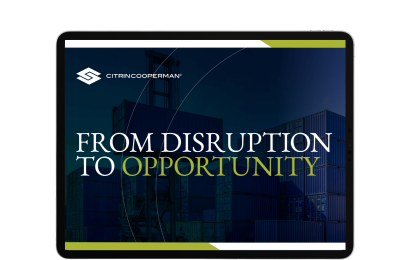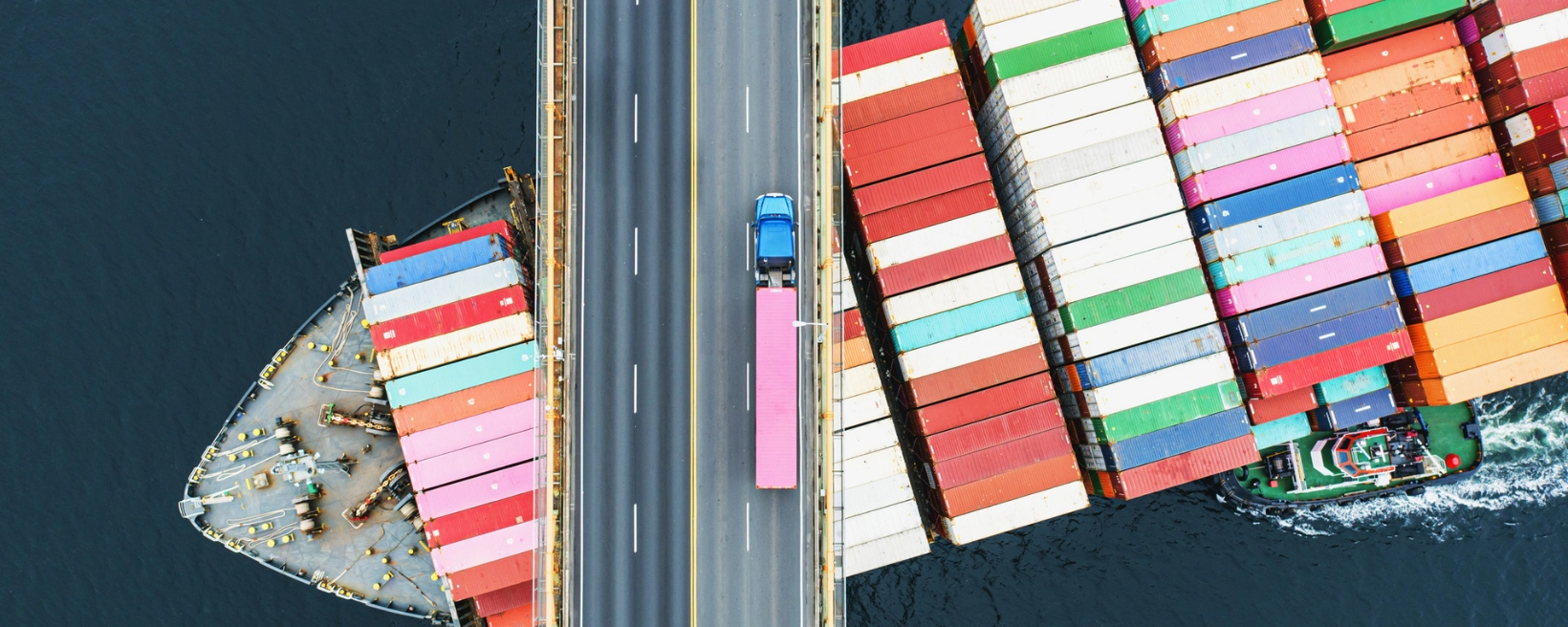Supply Chain Disruptors: The Effects of Climate Change and Environmental Risks on Manufacturing and Distribution
Climate change is reshaping the global supply chain in profound and urgent ways, presenting both immediate operational risks and long-term strategic challenges for manufacturing and distribution businesses worldwide. The increasingly frequent natural disasters, shifting weather patterns, and regulatory pressures tied to sustainability have created vulnerabilities that companies can no longer afford to overlook. As supply chains become more global and interconnected, the risks of disruption due to climate change have only multiplied, affecting manufacturing and distribution at every level.
Climate change disrupts the continuity, resilience, and efficiency the supply chain relies on to run smoothly. Rising temperatures, extreme weather events such as hurricanes, floods, and wildfires, and chronic conditions like droughts or sea-level rise have introduced new variables into planning and operations.
The frequency of these disruptions is increasing. According to the World Economic Forum, the total global economic losses from natural catastrophes rose to $162 billion in the first half of 2025 (up from $156 billion the previous year). While businesses once considered such disruptions "black swan" events, they are becoming regular stress tests for supply chains.
Transition Risks and Regulations
Beyond physical impacts, businesses must contend with transition risks — the regulatory, financial, and reputational pressures that arise from the global shift toward decarbonization. Governments around the world are enforcing stricter carbon disclosure requirements, emissions reduction targets, and incentives for sustainable energy transition.
For supply chains, this introduces risks of compliance costs, stranded assets, and supplier misalignment. Companies must map the carbon intensity of their suppliers to avoid regulatory penalties or reputational harm. For example, a retailer who sources textiles from countries with coal-heavy energy grids could face scrutiny under the Carbon Border Adjustment Mechanisms (CBAMs) being rolled out in the EU.
Additionally, investors now assess environmental, social, and governance (ESG) performance, directly linking capital access to how companies address climate risks. Firms seen as lagging in sustainability face higher financing costs, stricter loan terms, or even divestment.
Cascading and Systemic Effects
What makes climate-related supply chain risks particularly insidious is their compounding nature. Multiple severe-weather events across geographies can happen simultaneously, overwhelming even well-prepared companies. The COVID-19 pandemic highlighted how fragile global supply chains can be; climate shocks threaten a similar systemic vulnerability but on a recurring basis.
Consider semiconductor manufacturing, a sector dominated by concentrated hubs like Taiwan and South Korea. A typhoon or drought in Taiwan, already exacerbated by climate change, does not only slow local factories but reverberates through automotive, consumer electronics, and defense industries worldwide. The interconnectedness of global supply chains magnifies climate shocks into macroeconomic ones.
Subsector-Specific Vulnerabilities
Subsectors within the manufacturing and distribution industry face unique climate challenges based on their supply chain configurations.
-
Food and Beverage: Highly dependent on climate stability, this sector is among the most exposed to the effects of climate change and environmental risks. Agriculture depends on stable weather conditions. Droughts reduce crop yields, while rising sea levels threaten key industrial and agricultural zones. Coffee, cocoa, wheat, and rice are just a few crops whose global supply chains are at risk. Businesses are dealing with shifting crop zones, reduced freshwater supply, and climate-induced pests and diseases. Transportation issues compound this, as fresh food requires reliable and timely logistics.
-
Consumer Products and Retail: Fast fashion and retail increasingly source from climate-vulnerable regions like South Asia. Floods or extreme heat threaten both production facilities and workers’ safety. Demand patterns are also shifting as more consumers value sustainable products, creating complexities in sourcing ethical materials at fair costs. Businesses within this subsector are now challenged to increase circularity, reduce waste, and focus on resource efficiency across their supply chains to remain competitive.
-
Distribution and Logistics: The effects of extreme weather can be devastating to key transportation infrastructure like roads, bridges, ports, and railways, leading to transportation delays, rerouted shipments, and increased costs. Ports, railways, and trucking routes are increasingly vulnerable. Hurricanes disrupt ocean freight along major U.S. coastal hubs, while droughts in rivers, like the Mississippi, have physically restricted transport capacity, leaving barges stranded.
-
Industrial Products: Cement, steel, and construction materials are carbon-intensive and exposed to regulatory risks. Rising material costs due to energy transition targets reshape supply dynamics. Climate risks in these hubs introduce systemic vulnerabilities to global innovation.
-
Manufacturing: Extreme weather events, resource scarcity, and shifting regulations require manufacturers to rethink sourcing, production methods, and resilience planning. Factories may concentrate production in one region to benefit from economies of scale. Yet when regions like Southeast Asia or South China face extreme weather events like monsoons and heatwaves, operations can grind to a halt. Additionally, extreme temperatures strain the electrical grid. Factories reliant on stable power suffer delays, and downstream effects ripple across global supply chains.
Building Climate-Resilient Supply Chains
In response, manufacturing and distribution leaders are challenged to rethink supply chain design with a focus on resilience and sustainability. Traditional priorities of efficiency and cost minimization are being balanced with adaptation and redundancy. Key strategies include:
- Supplier Diversification: Avoiding overreliance on single geographies or vendors vulnerable to climate risks. Dual sourcing and nearshoring are seeing resurgence as hedging strategies.
- Climate Risk Modeling: Firms are increasingly embedding climate projections into supply chain risk models, utilizing AI and scenario analysis to map vulnerabilities.
- Sustainable Sourcing: Companies are engaging suppliers to reduce emissions, improve water efficiency, and adopt regenerative practices. Supplier audits on ESG performance are becoming standard.
- Circular Economy Models: By recycling and repurposing materials, companies cut dependency on vulnerable raw material supply chains.
- Technology-Driven Solutions: Transparency and traceability help companies respond quickly when disruptions occur. Predictive analytics can also improve adaptive capacity.
Prepare for Uncertainty with Citrin Cooperman
Climate change is reshaping the global supply chain in profound and urgent ways, presenting both immediate operational risks and long-term strategic challenges for manufacturing and distribution businesses worldwide. The increasingly frequent natural disasters, shifting weather patterns, and regulatory pressures tied to sustainability have created vulnerabilities that companies can no longer afford to overlook. As supply chains become more global and interconnected, the risks of disruption due to climate change have only multiplied, affecting sourcing, manufacturing, and distribution at every level. By investing in resilience, embracing sustainability, and collaborating across borders, companies can transform vulnerability into a competitive advantage.
Citrin Cooperman’s Manufacturing and Distribution Industry Practice is well-equipped to help your business navigate uncertainty in the supply chain to create future value. For more information, reach out to Max Shapiro, or your Citrin Cooperman advisor.
Citrin Cooperman’s 2025 Manufacturing and Distribution Pulse Survey Report

Our 2025 Manufacturing and Distribution Pulse Survey Report of 500 industry leaders gathered insights into what is top of mind for the future. The in-depth analysis highlights key trends shaping the sector, including:
- Strategic supply chain and logistics investments
- Accelerated adoption of AI and advanced tech
- Emerging risks, like tariffs, inflation, and rising costs
- Forward-looking growth strategies, such as M&A and facility expansion
Latest Article Cards

Uncharted No More: Capital Sources in the Independent Sponsor Sector
Read More

Effective Retention Strategies for Advertising Agencies
Read More

Uncharted No More: Deal Sources in the Independent Sponsor Sector
Read More

Strategic Decisions for Successful Restaurants: Occupancy Costs
Read More


